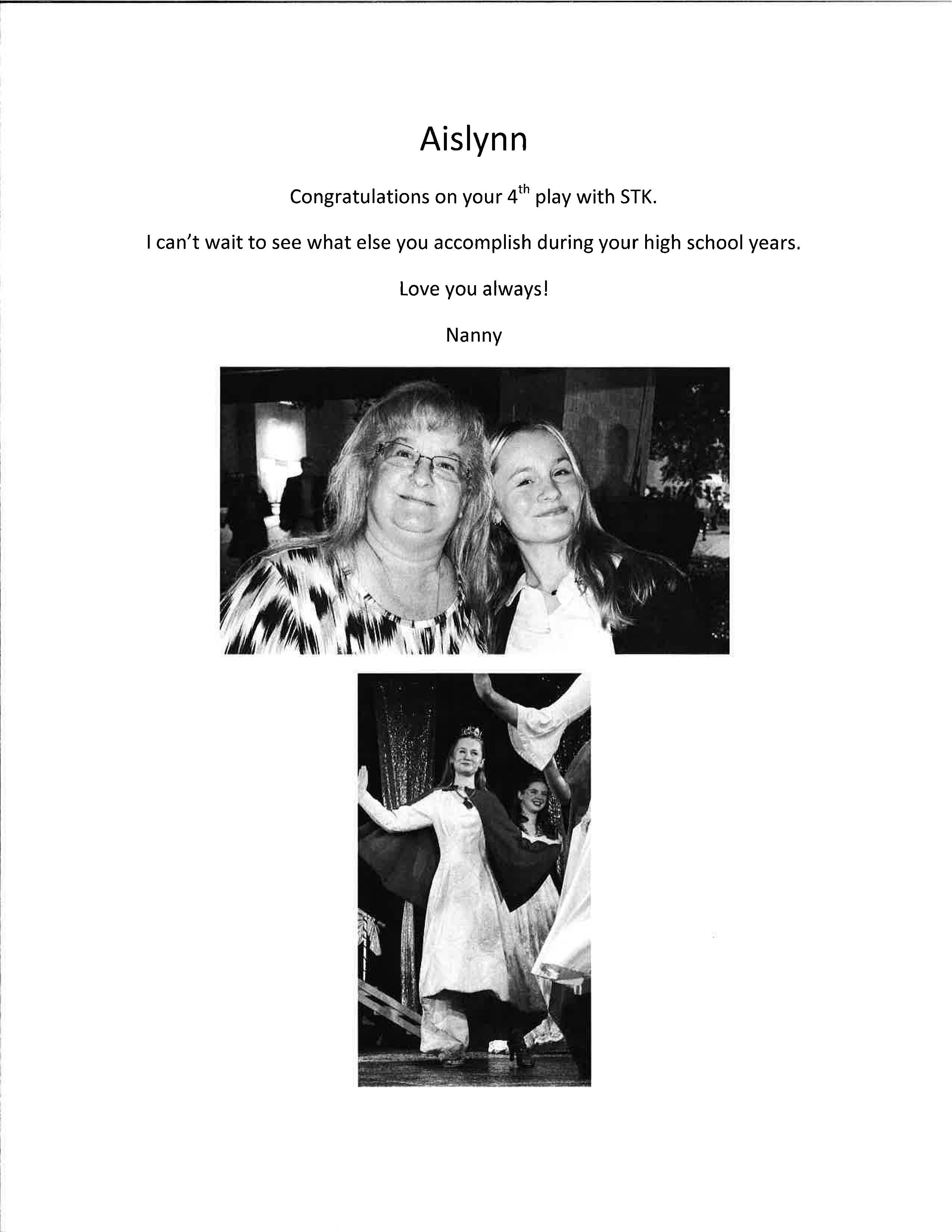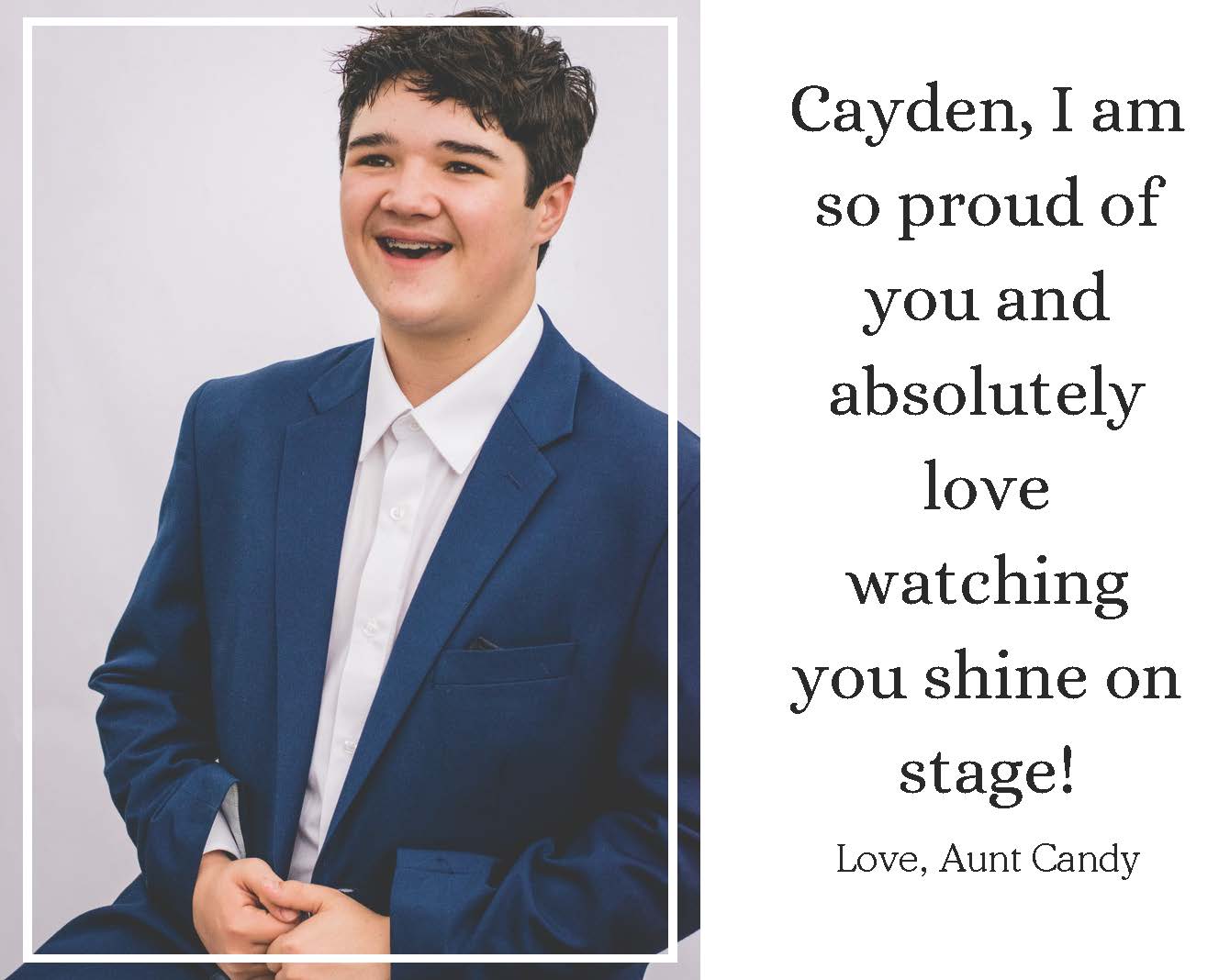
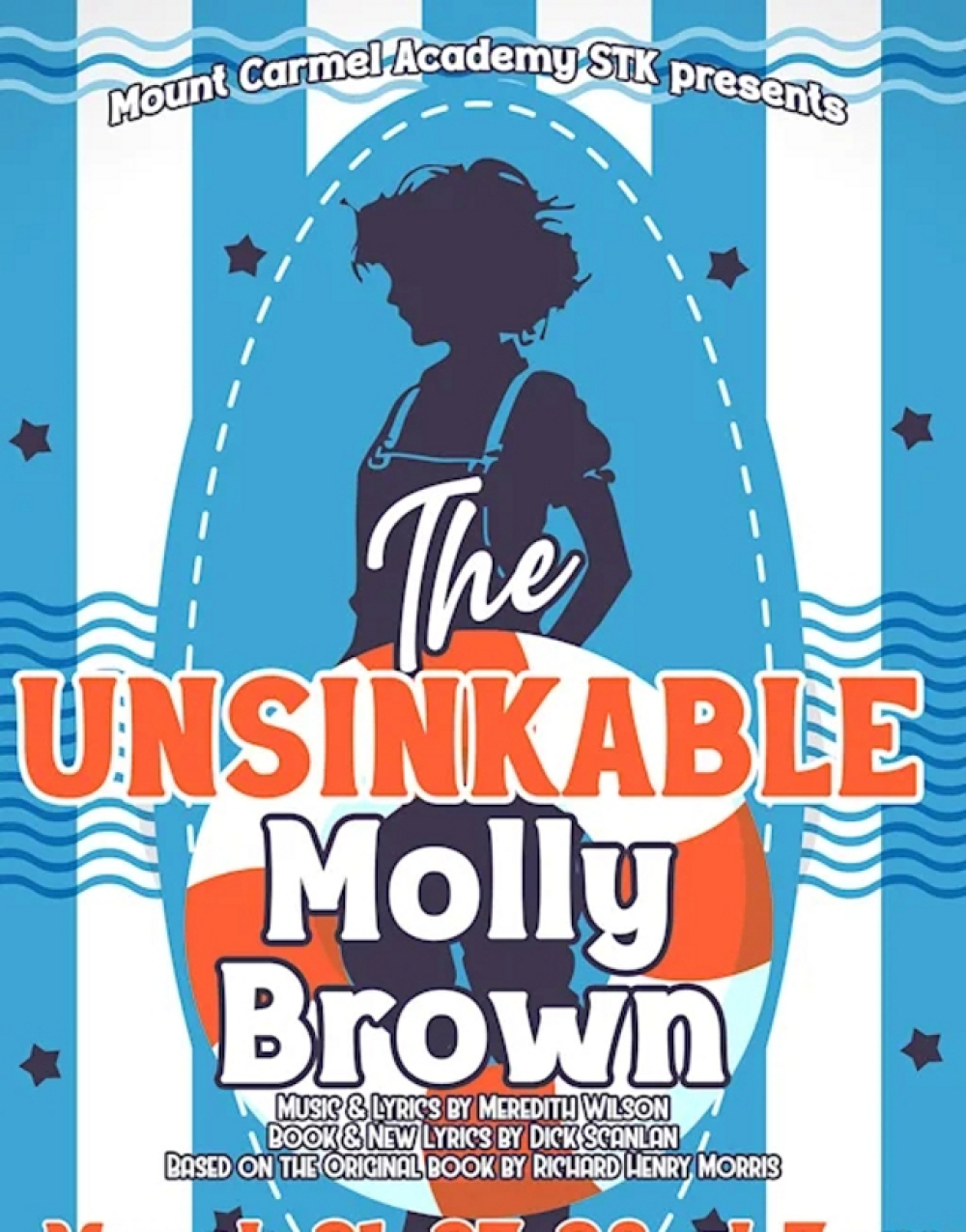
|
THE UNSINKABLE MOLLY BROWN
Based on the Original Book by RICHARD MORRIS
|
|||||
|
|
|||||
| Colleen D'Aquila Andrew Eastland | |||||
|
Rosie Bonano Emily Buchler isabelle Castro Caeden Clark Molly Clement Kristina Dove Sadie Ferris |
Anabelle Gannon Sophia Gutierrez Ethan Hattier Finn Headrick Tallulah Maddox Helen Morlier Keri Evelyn Neumann
|
Aislynn Neil Lillian Oertling Cayden Pecoraro Mia Peppo Caitlin Picone Charli Slaughter Joseph Timphony |
|||
|
|
|||||
The Unsinkable Molly Brown is presented through special arrangement with Music Theatre International (MTI).
All authorized performance materials are also supplied by MTI.
www.mtishows.com
Follow Us:
Our production of The Unsinkable Molly Brown is made possible through a grant from Educational Theatre Foundation, The Music Man Foundation, and Music Theatre International. In both 2023 and 2024, 16 high schools were selected to receive $10,000 to produce the show.
Applicants were asked to show plans to use the work as a tool to engage their school and community in the musical's themes, which include women's and immigrants' rights, community-building, and Molly Brown's civic-minded "share-the-luck" spirit.
“Using theatre as a means to promote racial equity and spark social activism in underserved populations is a key part of ETF's mission,” said ETC Board Chair Matt Conover in a statement. “We’re thrilled that these schools and their communities will have the opportunity to engage with this revised classic in new and empowering ways.”
Kristi Jacobs-Stanley, director of STK, stated that the opportunity to stage The Unsinkable Molly Brown fits the unofficial motto of STK, "get it done": "We are an all-female Catholic school. We are challenged to create all aspects of theatre in house, and Molly's get-it-done attitude is something that we work to employ. In our society today, young people often think that their voices are not heard, that their opinions do not matter. Engaging with the themes of The Unsinkable Molly Brown could light a fire of inspiration for students to work within our communities to improve lives, one family at a time. Having our students realize the impact of one person -- someone who almost didn't make it -- upon the world is an empowering opportunity."
Inspired by Molly's pioneering philanthropic endeavors, STK is partnering with Second Harvest Food Bank and Take Paws Rescue. Patrons who bring a people food item or dog food for donation will receive a free concession item.
STK is thankful for new black stage masking curtains and red house curtains funded by the New Orleans Tourism and Cultural Fund
Notes from the Dramaturg
Many of the characters in this play are historical figures:
- Molly Brown
- JJ Brown
- Horace Tabor and his wife, Elizabeth “Baby Doe” Tabor
- Louise Sneed-Hill
Molly and JJ
Born in 1867, Margaret (Molly) Tobin was born to Irish Catholic immigrants in Hannibal, Missouri. She attended school until she was 13, when she began working at a tobacco factory. In 1886 at the age of 19, she moved west, drawn by dreams of prosperity. Once in Leadville, Margaret (as she was known then) worked in a local store, became involved in the Annunciation Catholic Church, and helped with aid efforts as the town of Leadville suffered economic hardship due to the drop in silver prices. She met and married James Joseph Brown, a mining engineer, that same year.
Molly, JJ, Kit (on JJ's knee), and Larry Brown
In Leadville, Molly became active in the early feminist movement and aided in the establishment of the Colorado Chapter of the North American Women’s Suffrage Association. In 1894, the Browns moved to Denver, where their lavish home would eventually become the Molly Brown House Museum. In 1909, JJ and Molly legally separated; they were both Catholic and never divorced. Although they never did reconcile, they remained connected and cared about each other for the rest of their lives. JJ’s stroke actually occurred in 1898, leading to partial paralysis. His health never fully recovered, and he died of a series of heart attacks in 1922.
In April 1912, Molly boarded the Titanic from France when a family member became ill. The supposedly "unsinkable" ocean liner left Southampton, England, for New York City before striking an iceberg and sinking in less than three hours. During the traumatic chaos of loading lifeboats, the ship's orchestra valiantly played on to keep the passengers calm. Of the estimated 2,224 passengers and crew, more than 1,500 died, trapped on the sinking ship or drowning in the frigid North Atlantic. The ocean liner had the capacity for 48 lifeboats but was equipped with only 20, and only 18 of those lifeboats were able to be lowered when the ship sank. Even worse, those lifeboats held only 60% of their capacity, resulting in the deaths of thousands, including some of the most prominent men and women of the time. The 706 survivors were rescued by RMS Carpathia and brought to New York.
As one of the few who were rescued, Molly Brown tirelessly helped other survivors and later established the Survivor’s Committee, which earned her a place in the spotlight.
Molly promoted women’s rights and became the first woman to run for Congress in 1914. Additionally, she helped erect the Titanic Memorial, established a WWI relief station for soldiers, and was awarded the French Legion of Honor. Molly “Unsinkable” Brown died of a brain tumor in 1932.
Leadville
At more than 10,150 feet elevation, Leadville is actually the highest city in the United States -- truly the “2 Mile City.”
As the California Gold Rush (1848-1855) began to wind down, miners moved east into Colorado. In the high Rocky Mountains, placer gold (gold eroded from its rock source and found in water sources) was discovered in 1860. Within that year, 55,000 ounces of gold (worth $91 million today) was found, and a makeshift town called Oro City (Spanish and Italian for gold). By 1866, the gold supply was depleted, and most of the town’s miners and other residents moved on. Many remained, however, moving their mining efforts underground. In 1877, the heavy black sand that was common in the area was tested, revealing 40% lead with about 15 ounces of silver per ton. The town moved closer to the new mine, and Horace Tabor, the new town’s postmaster, named the town Leadville. By 1879, 30,000 people lived in Leadville, with hotels, saloons, and brothels springing up. Among others, Horace Tabor became a very rich man.
In the 1890s, the price of silver plummeted as the US moved away from basing its currency on silver and moved to gold -- the Gold Standard. Mines near Leadville closed, and unemployment rose, JJ Brown, the mine superintendent and part owner of the Ibex Mining Company, developed a technique to mine a vein of gold in the Little Johnny Mine and significantly improved the economy of Leadville. By the end of 1893, the Little Johnny Mine was shipping 135 tons of gold per day, and the Browns became millionaires.
Nugget of gold from the Little Johnny Mine
Louise Sneed-Hill and The Sacred 36
Louise Sneed-Hill (1862-1955), the daughter-in-law of smelting magnate and US Senator Nathaniel P. Hill, was the preeminent Denver socialite of her time, inaugurating the city’s first Who’s Who that included 47 names. These names were whittled down to 36 (enough to fill 9 bridge tables in her grand mansion). These card-playing, partying families of “The Sacred 36” also were socially conscious, participating in many children’s and women’s charities.
Sneed-Hill dictated who and who could not break into the posh Denver society. In the 1908 edition of Who’s Who in Denver Society, information about how to join offered “What Will Keep You Out” -- “an evident desire to break in hurriedly, an attempt to buy social position, and a lack of good sense and of good breeding.”
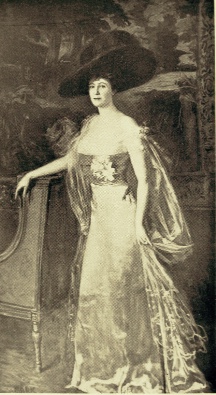
Louise Sneed-Hill, 1914
Song List
Act I
1. I Ain't Down Yet
2. The Wonderful Plan
2A. It's Wonderful Outside
3. Just Becuz
3A. Just Becuz It's Christmas
4. I'm A'ready Started In
4A Dancing to the Saddle Rock
5. Belly Up to the Bar Boys
6. I'm A'ready Started In (reprise)
6A. Running After J.J.
7. I'll Never Say No / Brass Bed / Duet
7A. A Colorado Weddin'
8. He's My Friend
8A. Mama's Cooking
9. Are You Sure?
10. Act I Finale
*There will be a 15 minute intermission.*
Act II
11. Beautiful People of Denver / The Sacred 36
12. Share the Luck / He's My Friend (reprise)
12A. Share the Luck Playoff
13. I'd Like to Change Everything about You
14. Cuppa Tea
14A. Ladies
15. If We Can-Can (part I)
15A. If We Can-Can (part 2)
16. I'd Like to Change Everything about You (reprise)
17. Dolce Trio
18. Wait for Me
19. Share the Luck (reprise)
20. Act II Finale
Cast
Crew
| Marley Bordelon | Assistant Stage Manager |
| Zoe Morris | Assistant Stage Manager |
|
Emmy Schuler |
Stage Crew |
| Kris Trepagnier | Stage Crew |
| Tiana Le | Sound Crew |
| Gabby White | Sound Crew |
| Chloe Nguyen |
Lighting Design Apprentice |
| Isabella Day | Lighting Crew |
| Emily Aleman | Costume Crew |
| Gloria Daroco | Costume Crew |
| Hannah Hodgdon | Prop Head |
| Riley Boh | Hair and Makeup Stella |
Box Office: Caroline Barrett
House Crew
| Lauren Buisson | Ella Desormeaux |
| Lauren Estorge | Hannah Hodgdon |
| Lauren Loris | Julia Motta-Brockton |
| Jolie Oubre | Karry Zapeda-Martinez |
| Alexandra Polyderas | Olivia Bruni |
Orchestra
| Keyboard | Karl Harrod |
| Reed I | Michael Taylor |
| Reed II | Karly Hymel |
| Guitar | Noah Kraus |
| Trumpet | Harrison Melancon |
| Trombone | Elijah Swan |
| Percussion | Caleb St. Pierre |
Creative Team
Kristi Jacobs-Stanley
Karl Harrod
Baylee Robertson
Morgan Wilson
Charli Slaughter
Edward Cox
Alex Alvarenga
Lana Barbe
Graycen Delbert
Lexi Mason
Gilly Jaunet
Meet the Company
Emily Buchler
 The Unsinkable Molly Brown is Emily's 4th STK show. She is a freshman at MCA and has been doing theatre since the summer after 6th grade. She was in Matilda Jr as the Acrobat and in Xanadu Jr as Thetis with Mount Carmel's Summer in the Spotlight Summer Camp. With STK, she has been in Peter and the Starcatcher as Ensemble, in Into the Woods as Milky White, and in Queens as Jane P the Gossip. She hopes you all enjoy the show!
The Unsinkable Molly Brown is Emily's 4th STK show. She is a freshman at MCA and has been doing theatre since the summer after 6th grade. She was in Matilda Jr as the Acrobat and in Xanadu Jr as Thetis with Mount Carmel's Summer in the Spotlight Summer Camp. With STK, she has been in Peter and the Starcatcher as Ensemble, in Into the Woods as Milky White, and in Queens as Jane P the Gossip. She hopes you all enjoy the show!
Caeden Clark
Molly Clement
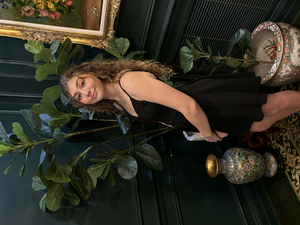 Molly is a kind person who has a love for theatre and art. From watching shows when she was younger to performing in shows at her schools, Molly has grown up with a passion for acting, singing, and dance.
Molly is a kind person who has a love for theatre and art. From watching shows when she was younger to performing in shows at her schools, Molly has grown up with a passion for acting, singing, and dance.
Colleen D'Aquila
 This is Colleen's 8th and final show with STK. She is very grateful to end her time with STK portraying a progressive historical figure. Colleen would like to thank her loved ones, the cast, the crew, and the creative team for their support and contribution to the show. She hopes you enjoy the show and would like to encourage anyone reading this to learn more about Margaret Tobin Brown's life of "sharing the luck."
This is Colleen's 8th and final show with STK. She is very grateful to end her time with STK portraying a progressive historical figure. Colleen would like to thank her loved ones, the cast, the crew, and the creative team for their support and contribution to the show. She hopes you enjoy the show and would like to encourage anyone reading this to learn more about Margaret Tobin Brown's life of "sharing the luck."
Kristina Dove
Sadie Ferris
 This is Sadie's second STK show and she is so excited to perform a big new show! Her past credits are Penny in Honk at St. Dominic, ensemble in Into the Woods at JPAC, Jetsum in The Little Mermaid at St. Dominic, Thalia in Xanadu at Mount Carmel Summer Camp, Dorothy in The Wizard of Oz at St. Dominic, Into the Woods as Baker's Wife, ensemble in Newies at St. Luke's, and Anne H. in Queens at Mount Carmel.
This is Sadie's second STK show and she is so excited to perform a big new show! Her past credits are Penny in Honk at St. Dominic, ensemble in Into the Woods at JPAC, Jetsum in The Little Mermaid at St. Dominic, Thalia in Xanadu at Mount Carmel Summer Camp, Dorothy in The Wizard of Oz at St. Dominic, Into the Woods as Baker's Wife, ensemble in Newies at St. Luke's, and Anne H. in Queens at Mount Carmel.
Anabelle Gannon
Sophia Gutierrez
 This is Sophia's 7th STK show! She is so excited for everyone to see this performance and hopes that they can see the hard work that both the cast and crew have put into this show. Sophia would like to thank her parents for being so supportive of her during this time as well as the stage manager who has really outdone herself this time. She hopes that you enjoy the show!
This is Sophia's 7th STK show! She is so excited for everyone to see this performance and hopes that they can see the hard work that both the cast and crew have put into this show. Sophia would like to thank her parents for being so supportive of her during this time as well as the stage manager who has really outdone herself this time. She hopes that you enjoy the show!
Finn Headrick
 Finn has been dancing since he was six years old and has been doing musical theater since nine. His first show was “Oliver” at Rivertown Theaters after being recommended by Encore Studios, and has been doing shows nonstop since. This is his first show at Mount Carmel, and he is thrilled to be a part of the STK family.
Finn has been dancing since he was six years old and has been doing musical theater since nine. His first show was “Oliver” at Rivertown Theaters after being recommended by Encore Studios, and has been doing shows nonstop since. This is his first show at Mount Carmel, and he is thrilled to be a part of the STK family.
Tallulah Maddox
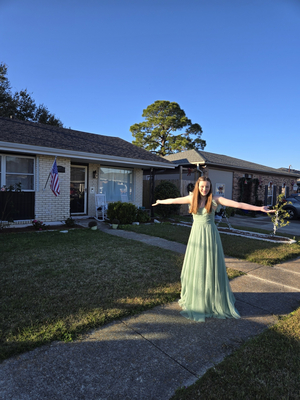 Tallulah is excited to be back for her third show with STK: The Unsinkable Molly Brown! She played an ancestor in The Addams Family Jr., Granny in Into the Woods, and the Fool in Queens. As a Freshman, she is looking forward to more STK shows in the future!
Tallulah is excited to be back for her third show with STK: The Unsinkable Molly Brown! She played an ancestor in The Addams Family Jr., Granny in Into the Woods, and the Fool in Queens. As a Freshman, she is looking forward to more STK shows in the future!
Helen Morlier
 The Unsinkable Molly Brown is Helen's last time gracing the stage and her 10th and final show with STK. You've previously seen her as Molly Aster in Peter and the Starcatcher, Cinderella in Into the Woods, and Catherine of Aragon in SIX teen edition. STK has been the highlight of her high school experience, and she is both excited and sad to hang up her character shoes and embark on a new journey. She'd like to thank her family for supporting her in every show, Mrs. Jacobs-Stanley for all the opportunities and memories, and the rest of her STK family for being her best friends. She hopes you enjoy the show!
The Unsinkable Molly Brown is Helen's last time gracing the stage and her 10th and final show with STK. You've previously seen her as Molly Aster in Peter and the Starcatcher, Cinderella in Into the Woods, and Catherine of Aragon in SIX teen edition. STK has been the highlight of her high school experience, and she is both excited and sad to hang up her character shoes and embark on a new journey. She'd like to thank her family for supporting her in every show, Mrs. Jacobs-Stanley for all the opportunities and memories, and the rest of her STK family for being her best friends. She hopes you enjoy the show!
Aislynn Neil
 Aislynn '28 is so excited to end her freshman year with The Unsinkable Molly Brown! This is her 2nd STK musical and 4th STK production. Aislynn has previously been a part of the ensemble in Peter and the Starcatcher and Into the Woods and was Anne of Cleves in Queens. She is so proud of how far her senior "big sis" class has come (Helen, Colleen, Mia, Lana, Kristina) and is so happy to be able to perform in their last STK show with them! She thanks her family, friends, Mrs. Jacobs-Stanley, Mrs. Jaunet, Mr. Karl, Ms. Morgan, the cast, and crew for making the vision of this production come to life! She hopes you enjoy the show!
Aislynn '28 is so excited to end her freshman year with The Unsinkable Molly Brown! This is her 2nd STK musical and 4th STK production. Aislynn has previously been a part of the ensemble in Peter and the Starcatcher and Into the Woods and was Anne of Cleves in Queens. She is so proud of how far her senior "big sis" class has come (Helen, Colleen, Mia, Lana, Kristina) and is so happy to be able to perform in their last STK show with them! She thanks her family, friends, Mrs. Jacobs-Stanley, Mrs. Jaunet, Mr. Karl, Ms. Morgan, the cast, and crew for making the vision of this production come to life! She hopes you enjoy the show!
Keri Evelyn Neumann
 Keri Evelyn cannot wait for you to see this historical performance! She debuted on the STK stage during her sophomore year as Lord Aster in Peter and the Starcatcher. She also enjoyed playing Rapunzel in Into the Woods and Catherine Parr in Six for the club. She is excited to perform alongside some of her best friends, some for the last time. Keri thanks everyone who helped put on this fun show!
Keri Evelyn cannot wait for you to see this historical performance! She debuted on the STK stage during her sophomore year as Lord Aster in Peter and the Starcatcher. She also enjoyed playing Rapunzel in Into the Woods and Catherine Parr in Six for the club. She is excited to perform alongside some of her best friends, some for the last time. Keri thanks everyone who helped put on this fun show!
Lillian Oertling
 Lillian is thrilled to be in her second STK play! Lillian is an 8th grade board member at MCA. Lillian has been seen in and around the city in many plays. Her favorite roles include Rapunzel - Into the Woods Jr. (MCA); Sebastian - Little Mermaid Jr. (SPX); The Tin Man - Wizard of Oz Jr. (SPX); Sina - Moana, Jr. ( Rivertown); and Coral- Finding Nemo Jr. (Rivertown). She studies dance at Encore and takes voice lessons with Ms. Lauren Gisclair. Lillian would like to thank her family, friends, and the cast and crew of Molly Brown for making this show possible!
Lillian is thrilled to be in her second STK play! Lillian is an 8th grade board member at MCA. Lillian has been seen in and around the city in many plays. Her favorite roles include Rapunzel - Into the Woods Jr. (MCA); Sebastian - Little Mermaid Jr. (SPX); The Tin Man - Wizard of Oz Jr. (SPX); Sina - Moana, Jr. ( Rivertown); and Coral- Finding Nemo Jr. (Rivertown). She studies dance at Encore and takes voice lessons with Ms. Lauren Gisclair. Lillian would like to thank her family, friends, and the cast and crew of Molly Brown for making this show possible!
Cayden Pecoraro
 Cayden, a freshman at Brother Martin High School, is so excited to be working with STK as Arthur in The Unsinkable Molly Brown! He last performed as a Hero Child on The Polar Express Train Ride following right behind Pugsley in The Addams Family at Brother Martin High School. Some of his favorite past performances include Newsies, Jr. as Crutchie;
mainstage productions of Mary Poppins as Michael Banks; Matilda as Bruce; The Music Man as Winthrop; and Beauty and the Beast as Chip. Cayden has been dancing at Encore Studio of Dance for 5 years.
Other credits include:The Lion King Jr. as Pumba, The Little Mermaid Jr. as Scuttle, and Annie as an orphan and police officer where he started his acting career with Jefferson Parish Public School System’s Talented Theatre Program at 6 years old. Cayden also has been in the JPAS mainstage productions of The Sound of Music as Kurt and Peter Pan as Michael Darling as well as Frozen Jr. as Olaf (where he first worked with Mrs. Jacobs-Stanley), Honk Jr. as Bewick, and The Lion King Jr. as a zebra.
When Cayden is not on stage performing, he enjoys playing video games, drawing, sketching, swimming, diving, playing soccer and basketball with friends, and never stops singing and dancing.
Cayden, a freshman at Brother Martin High School, is so excited to be working with STK as Arthur in The Unsinkable Molly Brown! He last performed as a Hero Child on The Polar Express Train Ride following right behind Pugsley in The Addams Family at Brother Martin High School. Some of his favorite past performances include Newsies, Jr. as Crutchie;
mainstage productions of Mary Poppins as Michael Banks; Matilda as Bruce; The Music Man as Winthrop; and Beauty and the Beast as Chip. Cayden has been dancing at Encore Studio of Dance for 5 years.
Other credits include:The Lion King Jr. as Pumba, The Little Mermaid Jr. as Scuttle, and Annie as an orphan and police officer where he started his acting career with Jefferson Parish Public School System’s Talented Theatre Program at 6 years old. Cayden also has been in the JPAS mainstage productions of The Sound of Music as Kurt and Peter Pan as Michael Darling as well as Frozen Jr. as Olaf (where he first worked with Mrs. Jacobs-Stanley), Honk Jr. as Bewick, and The Lion King Jr. as a zebra.
When Cayden is not on stage performing, he enjoys playing video games, drawing, sketching, swimming, diving, playing soccer and basketball with friends, and never stops singing and dancing.
Mia Peppo
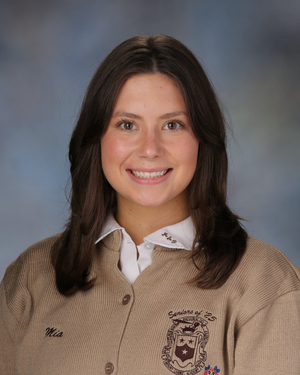 Mia is so excited to be returning to STK for her senior show! Last spring she played Sarah Brown in Jesuit Philelectic Society's production of Guys and Dolls, and she was in Xanadu (Euterpe) the Spring before that. She is happy to be closing her theater career in her favorite theater in the world, the PAC!
Mia is so excited to be returning to STK for her senior show! Last spring she played Sarah Brown in Jesuit Philelectic Society's production of Guys and Dolls, and she was in Xanadu (Euterpe) the Spring before that. She is happy to be closing her theater career in her favorite theater in the world, the PAC!
Caitlin Picone
 Caitlin Picone is very excited to be in The Unsinkable Molly Brown at Mt. Carmel Academy. She has been featured in many past musicals as Katherine Howard in Six (Mt. Carmel), Cady Heron in Mean Girls Jr. (Rivertown Theaters), Little Red Riding Hood in Into the Woods (Mt. Carmel), Mary Beth in A Christmas Story (Rivertown Theaters), Molly (Understudy) in Peter and the Starcatcher (Mt. Carmel), Kira in Xanadu Jr. (MCA Summer Camp), etc. Caitlin would like to thank all of her cast members, Music Director Mr. Karl, and Choreographer Ms. Morgan for working so hard on this show. She would also like to thank the crew for everything they do and for taking their jobs very seriously. Caitlin would like to thank the Senior Stage Manager, Lana Barbe, for all her hard work, keeping everyone in line, and being the best Stage Manager ever! Caitlin would also love to thank Colleen Da'quilla for her incredible work as Molly Brown and for all of the love and support that she has given her! Love you Big Sis! 🫶 To Helen Morlier, Caitlin would like to extend a special thanks. Helen, thank you for taking me under your wing and mentoring me over the past two years. I have learned so many things from you and have appreciated all your advice. I will miss you so much! Last but not least, Caitlin would love to thank the Director, Mrs. Jacobs-Stanley, for all of her hard work and dedication and for giving her this opportunity.
Caitlin Picone is very excited to be in The Unsinkable Molly Brown at Mt. Carmel Academy. She has been featured in many past musicals as Katherine Howard in Six (Mt. Carmel), Cady Heron in Mean Girls Jr. (Rivertown Theaters), Little Red Riding Hood in Into the Woods (Mt. Carmel), Mary Beth in A Christmas Story (Rivertown Theaters), Molly (Understudy) in Peter and the Starcatcher (Mt. Carmel), Kira in Xanadu Jr. (MCA Summer Camp), etc. Caitlin would like to thank all of her cast members, Music Director Mr. Karl, and Choreographer Ms. Morgan for working so hard on this show. She would also like to thank the crew for everything they do and for taking their jobs very seriously. Caitlin would like to thank the Senior Stage Manager, Lana Barbe, for all her hard work, keeping everyone in line, and being the best Stage Manager ever! Caitlin would also love to thank Colleen Da'quilla for her incredible work as Molly Brown and for all of the love and support that she has given her! Love you Big Sis! 🫶 To Helen Morlier, Caitlin would like to extend a special thanks. Helen, thank you for taking me under your wing and mentoring me over the past two years. I have learned so many things from you and have appreciated all your advice. I will miss you so much! Last but not least, Caitlin would love to thank the Director, Mrs. Jacobs-Stanley, for all of her hard work and dedication and for giving her this opportunity.
Charli Slaughter
 Charli is so excited to be performing in her 5th STK show! She previously played Lucinda in Into the Woods, Anne Boleyn in Queens, and Understudy Katherine Howard in Six. Charli would like to thank her friends and family, Ms. Morgan, Mr. Karl, Mrs. Jaunet, and Mrs. Jacobs-Stanley for putting on a wonderful production!
Charli is so excited to be performing in her 5th STK show! She previously played Lucinda in Into the Woods, Anne Boleyn in Queens, and Understudy Katherine Howard in Six. Charli would like to thank her friends and family, Ms. Morgan, Mr. Karl, Mrs. Jaunet, and Mrs. Jacobs-Stanley for putting on a wonderful production!
Joseph Timphony
 Joseph Timphony (or Joey), plays the role of Senator Bourne and Vincenzo in Mount Carmel's STK's showing of The Unsinkable Molly Brown. Joseph has performed three shows before this at Holy Cross High School, his most recent role being that of Alfred Doolittle in My Fair Lady. Joseph could not be more excited and thankful for his family and friends, along with the welcoming, kind, and hard working members of STK for making the show possible. To end of with a quote from Cilian Murphy (one of his favorites) "...as an actor, empathy is the most powerful tool you have..."
Joseph Timphony (or Joey), plays the role of Senator Bourne and Vincenzo in Mount Carmel's STK's showing of The Unsinkable Molly Brown. Joseph has performed three shows before this at Holy Cross High School, his most recent role being that of Alfred Doolittle in My Fair Lady. Joseph could not be more excited and thankful for his family and friends, along with the welcoming, kind, and hard working members of STK for making the show possible. To end of with a quote from Cilian Murphy (one of his favorites) "...as an actor, empathy is the most powerful tool you have..."
Kristi Jacobs-Stanley
 Kristi holds a B.A. in Theater from Loyola University and a M.F.A. in Theater Management from the University of Alabama/Alabama Shakespeare Festival. This is Kristi’s 15th year as STK Director and her 13th year serving as the Fine Arts Department Chair. She received a 2019 Big Easy Award for Best University Production at Loyola University as director of These Shining Lives and was awarded as the 2023 Volunteer of the Year for the Educational Theater Association. Past companies include Jeffesron Performing Arts, Alabama Shakespeare Festival, California Repertory Company, Seattle Children’s Theater, Missoula Children’s Theater, Hangar Theater, Walt Disney World, Evangeline Oaks Entertainment, Crescent City Lights Youth Theater, Southern Repertory Theater, and True Brew Theater. Favorite roles include The Children’s Hour (Mary Tilford), The Garden of Rikki Tikki Tavi (Chuchu), and Cinderella (Stepsister). Thanks to the fantastic cast and crew, STK officers, Eddie Cox, Alex Alvarenga, Karl Harrod, Morgan Wilson, Gilly Jaunet, Baylee Robertson, Kim Schultz, Sue Buras, Sister Camille Anne Campbell, Beth Ann Simno, her family, and a very special thanks to Marcus Stanley and Basil Marie Stanley.
Kristi holds a B.A. in Theater from Loyola University and a M.F.A. in Theater Management from the University of Alabama/Alabama Shakespeare Festival. This is Kristi’s 15th year as STK Director and her 13th year serving as the Fine Arts Department Chair. She received a 2019 Big Easy Award for Best University Production at Loyola University as director of These Shining Lives and was awarded as the 2023 Volunteer of the Year for the Educational Theater Association. Past companies include Jeffesron Performing Arts, Alabama Shakespeare Festival, California Repertory Company, Seattle Children’s Theater, Missoula Children’s Theater, Hangar Theater, Walt Disney World, Evangeline Oaks Entertainment, Crescent City Lights Youth Theater, Southern Repertory Theater, and True Brew Theater. Favorite roles include The Children’s Hour (Mary Tilford), The Garden of Rikki Tikki Tavi (Chuchu), and Cinderella (Stepsister). Thanks to the fantastic cast and crew, STK officers, Eddie Cox, Alex Alvarenga, Karl Harrod, Morgan Wilson, Gilly Jaunet, Baylee Robertson, Kim Schultz, Sue Buras, Sister Camille Anne Campbell, Beth Ann Simno, her family, and a very special thanks to Marcus Stanley and Basil Marie Stanley.
Karl Harrod
Baylee Robertson
Morgan Wilson
 Morgan is excited to have the opportunity to choreograph her first Mount Carmel show as an alumna. During her time in high school Morgan also studied dance at New Orleans Center for the Creative Arts. While earning her Bachelor of Science in Dance Pedagogy from Oklahoma City University, Morgan began working with the Lyric Theatre Thelma Gaylord Academy. There she worked as a choreographer, dance instructor, and stage manager for numerous productions, including The Music Man, Willy Wonka Jr., Putnam County Spelling Bee, and Seussical Jr.
After college, Morgan collaborated with multiple organizations, including Oklahoma City Community College’s College for Kids Program, where she choreographed Into the Woods Jr., Peter Pan Jr., and Charlie Brown Jr. Morgan is passionate about inspiring young performers and is excited to share her creativity and energy with the cast and crew.
After returning to her home state of Louisiana, Morgan continued to share her passion for dance and choreography through her work at local schools and dance studios. Her choreography credits in Louisiana include Annie at Fountainebleau High School, You’re A Good Man, Charlie Brown at Playmakers Theatre, and Singin' in the Rain & Aladdin Jr. at Rivertown Theatre. She has also coached the Golden Blues Dance Team and served as a dance teacher at St. Scholastica Academy. Currently, she is the Studio Director at Encore Studio of Dance, Tumbling, Music & Theatre, where she teaches various dance styles. Morgan is thrilled to work with this talented group of young performers to help bring the story of The Unsinkable Molly Brown to the stage.
Morgan is excited to have the opportunity to choreograph her first Mount Carmel show as an alumna. During her time in high school Morgan also studied dance at New Orleans Center for the Creative Arts. While earning her Bachelor of Science in Dance Pedagogy from Oklahoma City University, Morgan began working with the Lyric Theatre Thelma Gaylord Academy. There she worked as a choreographer, dance instructor, and stage manager for numerous productions, including The Music Man, Willy Wonka Jr., Putnam County Spelling Bee, and Seussical Jr.
After college, Morgan collaborated with multiple organizations, including Oklahoma City Community College’s College for Kids Program, where she choreographed Into the Woods Jr., Peter Pan Jr., and Charlie Brown Jr. Morgan is passionate about inspiring young performers and is excited to share her creativity and energy with the cast and crew.
After returning to her home state of Louisiana, Morgan continued to share her passion for dance and choreography through her work at local schools and dance studios. Her choreography credits in Louisiana include Annie at Fountainebleau High School, You’re A Good Man, Charlie Brown at Playmakers Theatre, and Singin' in the Rain & Aladdin Jr. at Rivertown Theatre. She has also coached the Golden Blues Dance Team and served as a dance teacher at St. Scholastica Academy. Currently, she is the Studio Director at Encore Studio of Dance, Tumbling, Music & Theatre, where she teaches various dance styles. Morgan is thrilled to work with this talented group of young performers to help bring the story of The Unsinkable Molly Brown to the stage.
Charli Slaughter
Edward Cox
Alex Alvarenga
Lana Barbe
Graycen Delbert
Lexi Mason
Gilly Jaunet
Donors
STK is thankful for new black stage masking curtains and red house curtains funded by the New Orleans Tourism and Cultural Fund






